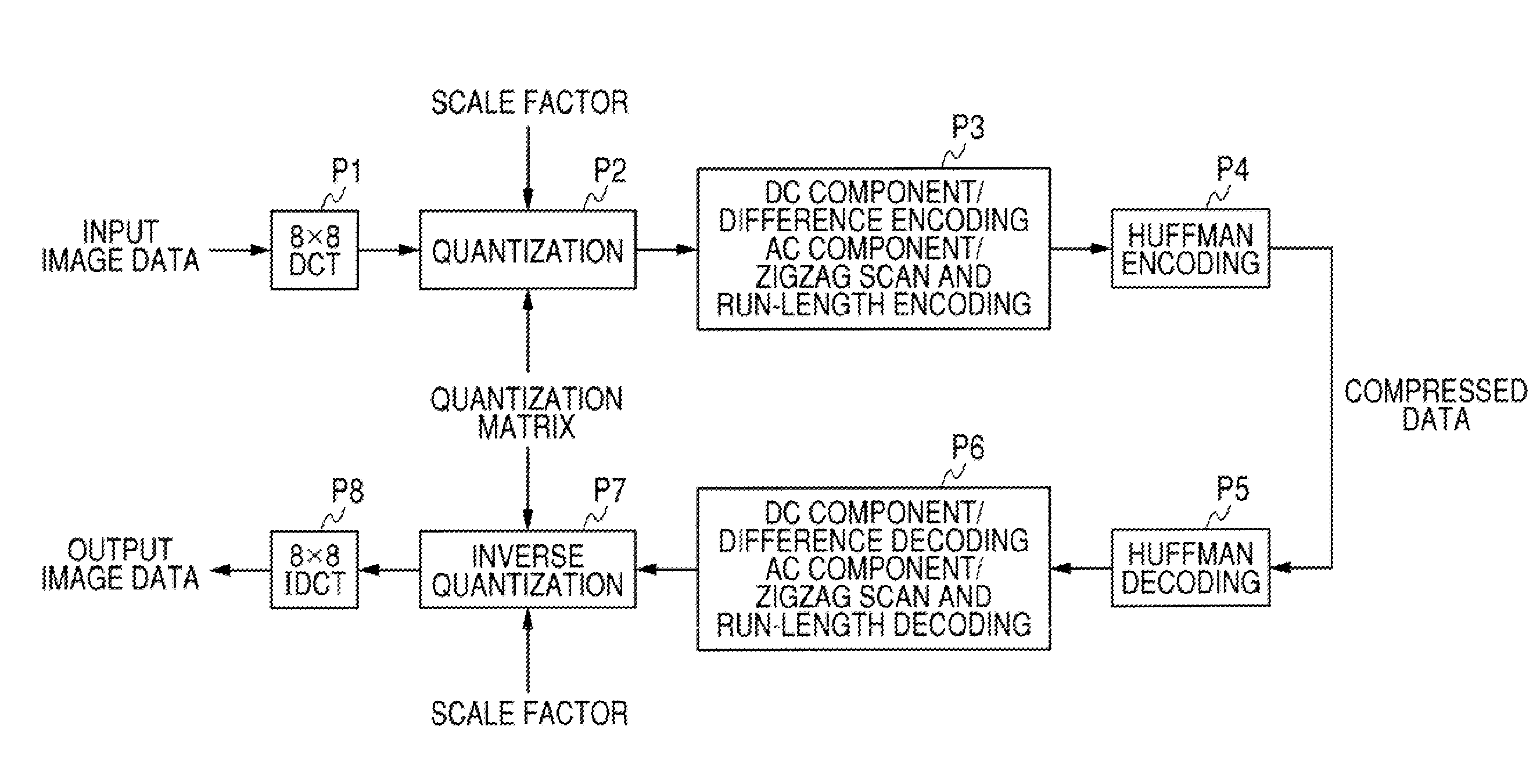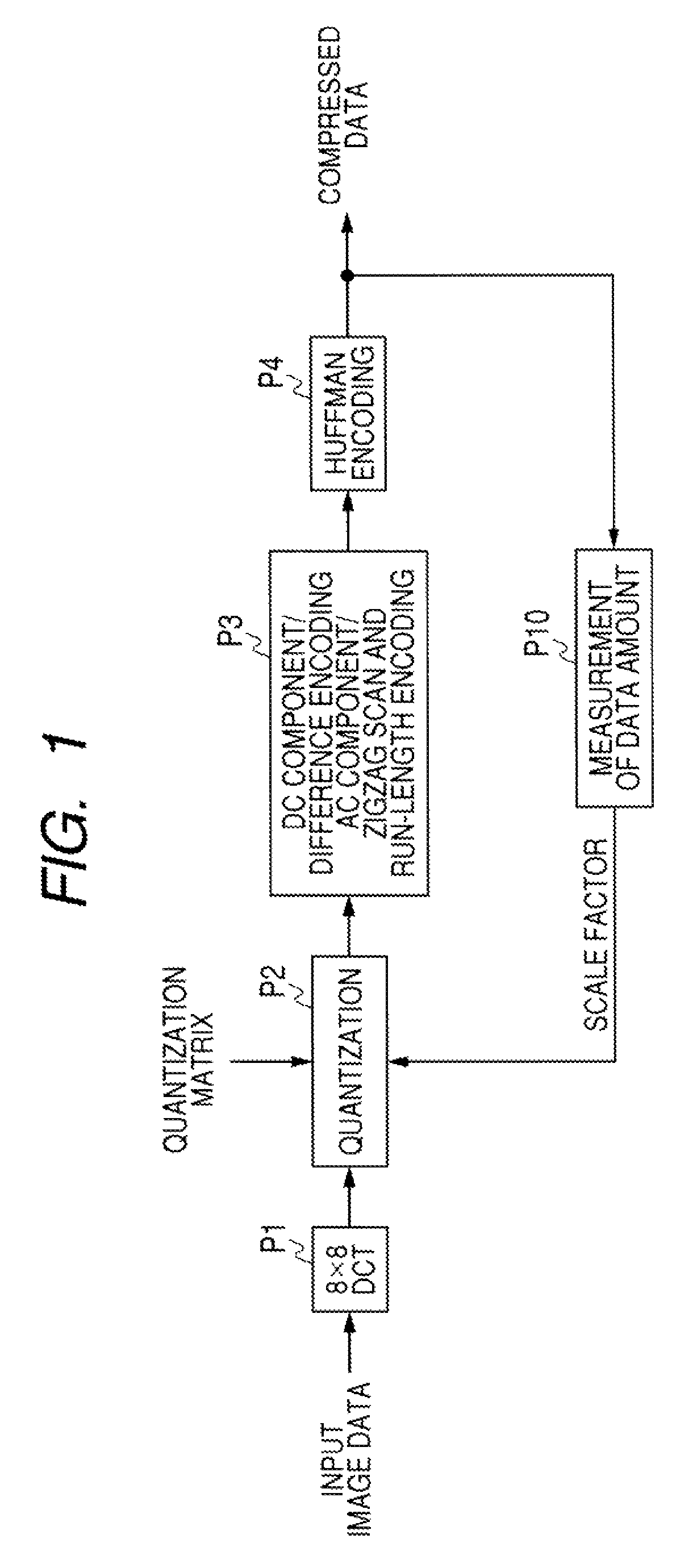Amount-of-compressed data control method and image data compressing apparatus
a data control and data amount technology, applied in the field of amount of compressed data control and image data compression apparatus, can solve the problems of preventing stable image quality, reducing the accuracy of image quality, and difficulty in estimating recording time and/or transmission time, so as to reduce the variation of scale factor
- Summary
- Abstract
- Description
- Claims
- Application Information
AI Technical Summary
Benefits of technology
Problems solved by technology
Method used
Image
Examples
Embodiment Construction
[0037]With reference to FIGS. 1 to 4, a first embodiment of the invention will be described below.
[0038]FIG. 1 is a schematic diagram showing a configuration example of processing steps applying the control over an amount of compressed data according to a first embodiment. In the description, the same reference numerals are given to the same components as those in FIG. 6, which have been described in the example in the past.
[0039]First of all, input image data is divided into multiple blocks each having n×n pixels such as 8×8 pixels horizontally and vertically, and two dimensional discrete cosine transform (DCT) is performed on each of the blocks (process P1).
[0040]The DCT is a kind of orthogonal transform in a frequency region and is defined by:
[0041]F(u,v)=4C(u)C(v)n·n∑i=0n-1∑j=0n-1f(i,j)×cos(2i+1)uπ2ncos(2j+1)vπ2n(Expression1)
where the conversion coefficient is F(u,v), and the input image data of each one block is f(i,j).
[0042]Inthiscase,C(w)=1 / √2...
PUM
 Login to View More
Login to View More Abstract
Description
Claims
Application Information
 Login to View More
Login to View More - R&D
- Intellectual Property
- Life Sciences
- Materials
- Tech Scout
- Unparalleled Data Quality
- Higher Quality Content
- 60% Fewer Hallucinations
Browse by: Latest US Patents, China's latest patents, Technical Efficacy Thesaurus, Application Domain, Technology Topic, Popular Technical Reports.
© 2025 PatSnap. All rights reserved.Legal|Privacy policy|Modern Slavery Act Transparency Statement|Sitemap|About US| Contact US: help@patsnap.com



